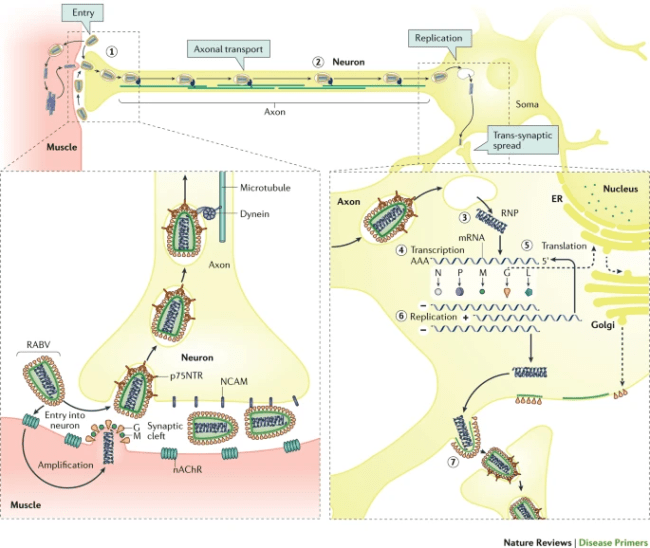This post was written by Fritz reuther, maximilian lukes and chin chia chang, second year dentistry Students at ceu cardenal herrera university.
Last night, I watched the zombie movie World War Z. As a med student currently taking microbiology class, I was intrigued to compare what I’ve learned in class and investigate the credibility of the movie. So, how real is the zombie virus “Solanum”?

After a subject is bitten, an intense seizure overtakes the body as the central nervous system is rewired, the subject dies who then reanimates, transforming into a zombie (Pitt, 2013).
Incubation Period
The process of transformation has been mentioned to last several hours to seconds in the movie, but the majority of the bitten subjects have been shown to turn in just 12 seconds. In the real world, it is impossible for viruses to have such a quick effect on the body since it takes one minute for the blood to circulate all around the human body. It usually takes at least days if not weeks. In fact, one of the quickest known virus families, the Adenoviruses, take at least 2 to 14 days (Gavin, 2018). This is to allow viruses enough time to replicate, bring down body defenses, and exert an effect.
Mode of Entry
The fictional virus Solanum can be compared to the virus rabies in terms of transmission. Both are contracted through scratches or bites, allowing the virus to invade the brain and alter the behavior of the host. Since the movie World War Z doesn’t explain the mechanism of transmission of the virus, we can only assume that it is similar to the one of rabies:

at the brain (Fooks, 2017).
Behavior Alteration
The most prevalent effect of the Solanum is that the host loses him or herself, making them unconscious savages with the sole purpose of infecting every single human being. The virus limits the bodily functions to the musculoskeletal system and the basic senses being hearing, sight, and smell. Rabies for example affects the encephalitic form, causing autonomic dysfunction, increased tendon reflexes, and hyperactivity (Koury, 2021), all of which are also symptoms in the movie.
In the natural world behavior altering pathogens are most commonly parasites. For example Toxoplasma gondi, which infects small rodents, causing the absence of fear towards cats (Dubey, 2016). Similar to how the Solanum makes the zombies entirely fearless, as seen in the film jumping off buildings, running through walls/ windows, ignoring gunfire, etc… With the only objective to transmit the disease to a healthy host.
Selective Spreading/ Camouflage
In the movie it can be seen that the zombies only pursue healthy individuals, people with terminal illnesses like cancer are being ignored completely.

This leads the protagonist to inject a vial containing a terminal disease (not specified) and succeeds. The zombies use the smell to identify the presence of terminal diseases. This is unrealistic, because the sense of smell of humans is very limited and would not be capable of detecting such characteristics, compared to animals. Dogs for example, are known to have an extremely distinct olfactory function, making them capable of detecting certain cancers and viruses (Rozenbaum, 2020). Additionally, there are no recorded pathogens that avoid potential hosts in this manner (https://www.youtube.com/watch?v=feGHmv_eDcw, 5:17).
Conclusion
It is clear to say that the movie is displaying a completely irrational form of a virus, which can not be applied to the real world to this extent. Its unprecedented incubation time, extreme body effects, and abnormal behavior all indicate how implausible the idea of World War Z is. So the next time you find yourself worrying halfway through a zombie movie, just know nature is far from creating zombies.
References:
Dubey, J. P., Ferreira, L. R., Alsaad, M., Verma, S. K., Alves, D. A., Holland, G. N., & McConkey, G. A. (2016, May 26). Experimental toxoplasmosis in rats induced orally with eleven strains of Toxoplasma gondii of seven genotypes: Tissue tropism, tissue cyst size, neural lesions, tissue cyst rupture without reactivation, and ocular lesions. PloS one. Retrieved November 23,
2021, from https://www.ncbi.nlm.nih.gov/pmc/articles/PMC4882154/.
Fooks, A., Cliquet, F., Finke, S. et al. Rabies. Nat Rev Dis Primers 3, 17091 (2017). https://doi.org/10.1038/nrdp.2017.91
Gavin, M. L. (Ed.). (2018, October). Adenovirus (for parents) – nemours kidshealth. KidsHealth. Retrieved November 23, 2021, from https://kidshealth.org/en/parents/adenovirus.html.
Koury, R. (2021, July 2). Rabies. StatPearls [Internet]. Retrieved November 23, 2021, from https://www.ncbi.nlm.nih.gov/books/NBK448076/.
Pitt, B., Gardner, D., Kleiner, J., Bryce, I., Carnahan, M. M., Goddard, D., & Lindelof, D. (2013). World War Z. United States; Paramount Pictures.
Rozenbaum , M. (2020, June 19). The science of Sniffs: Disease smelling dogs: Understanding animal research. Understanding Animal Research. Retrieved November 23, 2021, from https:// www.understandinganimalresearch.org.uk/news/research-medical-benefits/the-science-of-sniffsdisease-smelling-dogs/.











